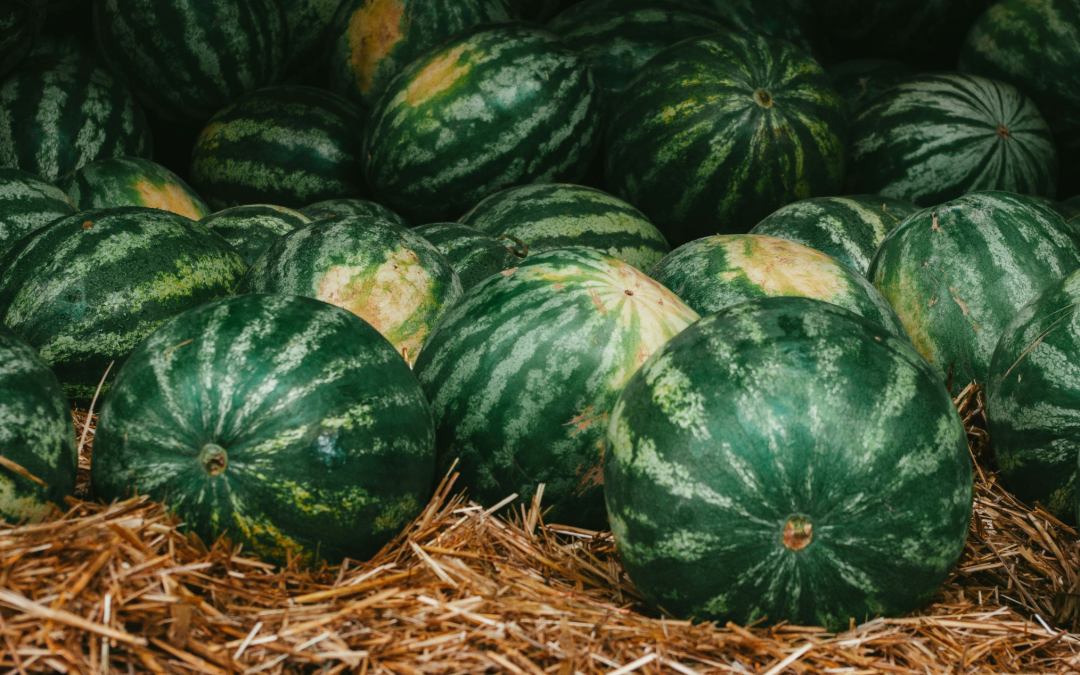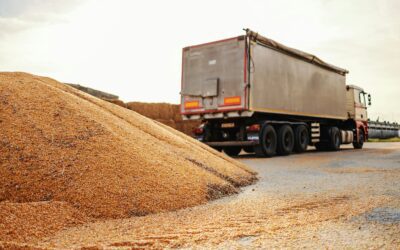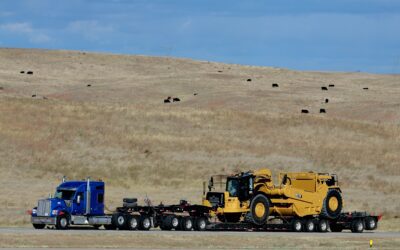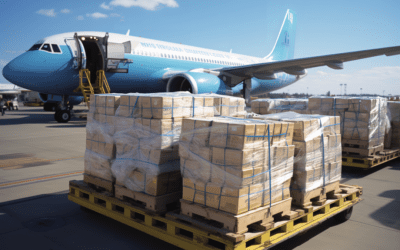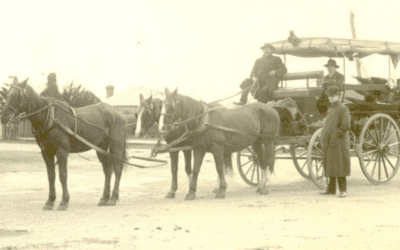The transportation system plays a massive and complex role in agricultural production. United States agricultural movements represent 30% of all ton-miles on transportation modes, including highways, waterways, and railroads. Trucks carry about 75% of the tonnage of agricultural, food, and fertilizer products. The flexibility trucking offers is vital to agriculture, especially during planting and harvest seasons. The U.S. is also a significant player in the global trade of agricultural products, with exports worth $196 billion in 2022. How are summer crops affected by the transportation industry, and what are the challenges and opportunities for the future?
Article Overview
Fresh challenges for summer produce
Fresh fruits and vegetables are essential for any meal, but how do they make it to the store? It may seem like they are picked from the farm, packed in a box, and delivered to the store. But it’s more complex than that.
According to the Food and Agriculture Organization (FAO), approximately one-third of all fresh fruits and vegetables are lost before reaching consumers. Some factors that affect summer produce’s quality are operational issues, including harvesting methods, handling practices, and packaging materials.
Furthermore, poor preservation, such as inadequate cooling, storage, and transportation conditions, can lead to spoilage and microbial contamination. Delays, damages, unloading, and the distribution of summer produce may impact the shelf life of the fruits and vegetables. Another challenge to account for is the necessary infrastructure in ports and warehouses, not having adequate cold chains limits the access and availability of the produce.

Climate changes & regulatory hurdles
Distance, weather conditions, transportation infrastructure, and regulatory compliance complicate the shipping process. Fluctuations in crop production are influenced by changes in weather conditions. While droughts and floods impact crop production yearly, the past three years have notably worsened. Research shows that approximately 30% of changes viewed in the yields of crops grown per hectare year-over-year can be attributed to shifts in the climate.
The U.S. Food and Drug Administration’s (FDA) Food Safety Modernization Act and the subsequent Final Rule on Traceability Records also adds to this complex process. Requiring more documentation and verification of the origin and destination of the produce.
Summer bounty across states
The United States is a major producer of various summer produce, with different regions specializing in different crops. Some of the most popular summer crops come from California, Florida, and Washington. Let’s take a closer look at these states and their summer produce.
- California:
California is a major producer of fruits and vegetables, including tomatoes, strawberries, lettuce, and avocados. According to USDA, the United States has produced an average of about 400 million pounds of avocados each year since 2000. California produces 95% of the avocados grown in the United States and 10% of the world’s production.
The climate and soil are ideal for growing fruits and vegetables in this state. However, it also faces challenges such as droughts, wildfires, and pests, which can affect the quality of its produce.
- Florida:
Florida is famous for its oranges, which are the main ingredient of Florida’s orange juice. They produce about 54% of the U.S. citrus crop and are the second largest orange producer in the world, after Brazil.
- Washington:
Washington grows a significant number of cherries and raspberries. Washington produces about 60% of the U.S. cherry crop and about 90% of the U.S. raspberry crop.
Transportation methods for summer produce
Transporting summer crops from the farm to the market and the consumer is not a simple task. Different types of summer produce require different transportation methods and conditions to ensure their quality is still at its peak.

Moreover, the summer months pose additional challenges due to the high temperatures and the increased demand for fresh produce. Summer produce is highly perishable and sensitive to temperature changes. Therefore, it must be shipped using refrigerated transport services, which can control the temperature and humidity levels inside the truck.
However, not all summer produce has the same temperature and storage time. Here are examples of the transportation requirements for different types of summer produce:
- Avocados: This popular summer fruit needs to be kept at 50 to 59 degrees Fahrenheit and can only be stored for 2 to 4 weeks. If the temperature is too high, avocados will quickly lose their quality.
- Melons: Honeydew and cantaloupe are refreshing summer fruits. Melons need to be kept at 45 to 50 degrees Fahrenheit and can only be in storage for 12 to 15 days.
- Tomatoes: are preserved for up to 10 days at an average temperature of 45 to 50 degrees Fahrenheit.
- Oranges: a juicy summer fruit that contains a great source of vitamin C, can only be kept in storage for 3 to 8 weeks at an average temperature of 35 degrees.
The value of cold chain logistics services
Reefers, or refrigerated trucks, are equipped with units that regulate the temperature and humidity inside the cargo space. They are essential for reducing America food waste and loss of produce during transportation and ultimately increase the shelf life.
Cold chain logistics is a system that handles temperature-sensitive products, such as fresh produce. Cold chain logistics relies on various functions in the supply chain, such as production, packaging, storage, transportation, and distribution. Warehousing within the cold chain provides multiple benefits, such as maintaining temperature and humidity levels and minimizing exposure to heat.
Shipper’s blueprint for success
- Pre-loading Tasks
Before loading the cargo, it is important for the shipper to coordinate with the receiver, who serves as either the importer or the consignee of the cargo. The receiver is responsible for identifying the necessary certificates, documents, and inspections for customs clearance. Subsequently, the shipper is tasked with acquiring and preparing the documents, ensuring they are accurate and complete.
The shipper also handles the transportation arrangements, such as booking the carrier, selecting the mode of transport, and choosing the route and schedule. Providing an estimated time of arrival for the shipment and scheduling a delivery appointment with the receiver falls within the shipper’s responsibility. All shippers should have an efficient communication plan with the receiver or 3PL about any special requirements or instructions for the cargo, such as temperature, humidity, and atmospheric conditions.
- Loading and checking tasks
During loading, it’s critical to ensure proper packing, labeling, and securing of the cargo using appropriate materials like boxes, crates, and pallets. Clear labels, including barcodes and RFID tags, should identify the cargo with details such as product name, quantity, weight, destination, and handling instructions.
Additionally, the shipper must verify shipping and receiving addresses and contact information and review receiver requirements. All details for loading, unloading, inspection, and cargo signing must be documented.

When is peak season for produce shipping?
The peak season for produce season usually occurs in late spring and early summer. The peak season for produce shipping from the U.S. to Mexico starts at the end of April and lasts until mid-June. Businesses can expect lower shipping rates and more equipment availability during this period.
How to optimize produce shipments during peak season
Shipping from the U.S. during peak produce season can be an excellent opportunity for shippers who want to lower costs and improve quality. Planning accordingly and being prepared for changes or challenges during peak season will ensure operational excellence.
Shippers should plan ahead with their logistics partner ahead of time to help secure contracts and ensure the best pricing with their transportation providers. Peak season brings higher competition and lower availability, so booking equipment as soon as possible is essential.
Grow your Agribusiness with reliable transportation services
At KCH Transportation, we understand the specific needs and challenges of the agriculture and crops industry. Our team of experts has the skills and experience to handle any type of agricultural product, from fresh produce to farming equipment. We offer flexible transportation solutions that ensure your crops reach the market efficiently and effectively.
If you’re looking for a reliable partner in the supply chain, contact our team today!

